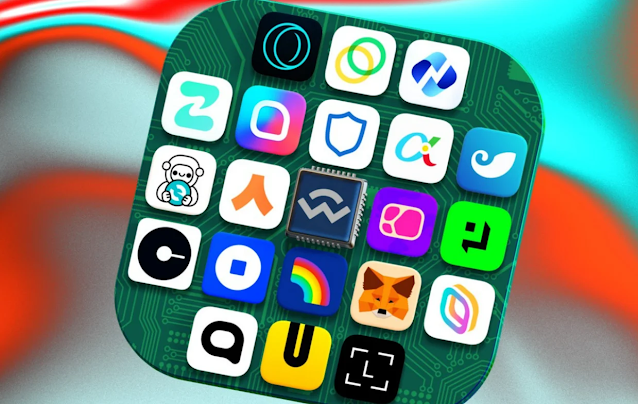What is Web3? Understanding the Next Evolution of the Internet
The internet has undergone significant transformations over the years, evolving from simple static web pages to the highly interactive and centralized platforms we use today. Now, a new wave of innovation, Web3, is set to revolutionize how we interact online by leveraging blockchain technology, decentralization, and user ownership. In this guide, we will explore Web3, its core principles, how it differs from Web1 and Web2, its benefits and challenges, and its potential impact on various industries.
1. Understanding Web3
What is Web3?
Web3 refers to the next evolution of the Internet, which emphasizes decentralization, user ownership, and blockchain technology. It shifts control from centralized authorities like big tech companies to individuals, allowing users to interact trustlessly and permissionlessly.
Key Principles of Web3:
Decentralization: Unlike Web2, where data is stored on centralized servers, Web3 applications run on blockchain networks, distributing data across multiple nodes.
Trustless and Permissionless: Web3 eliminates the need for intermediaries, allowing users to interact directly with one another through smart contracts.
User Ownership: Web3 enables individuals to own their digital identities, assets, and data without reliance on corporations.
Interoperability: Web3 applications (dApps) can work seamlessly across multiple platforms and blockchains.
2. Evolution from Web1 to Web3
Web1: The Static Web (1990s – Early 2000s)
Read-only web: Users can only consume content.
Websites were static and non-interactive.
No social media, e-commerce, or dynamic web applications.
Web2: The Social and Centralized Web (Early 2000s – Present)
Read-and-write web: Users can create and share content.
Rise of social media platforms (Facebook, Twitter, YouTube).
Heavy reliance on centralized companies (Google, Amazon, Meta).
Privacy concerns due to data harvesting and surveillance capitalism.
Web3: The Decentralized Web (Present – Future)
Read-write-own web: Users control their data and digital assets.
Blockchain-based identity and transactions.
Decentralized finance (DeFi), NFTs, and decentralized applications (dApps).
3. Core Technologies Powering Web3
Blockchain serves as the foundation for Web3, enabling decentralized storage, security, and trustless transactions.
Cryptocurrencies and Tokens
Web3 integrates digital assets like Bitcoin and Ethereum, which allow users to conduct transactions without intermediaries.
Smart Contracts
Smart contracts are self-executing agreements coded into blockchain networks, enabling decentralized applications to function autonomously.
Decentralized Finance (DeFi)
DeFi removes traditional financial institutions by offering decentralized lending, borrowing, and trading platforms.
Decentralized Autonomous Organizations (DAOs)
DAOs are governance models in Web3 that enable community-driven decision-making without centralized authority.
Interoperability and Cross-Chain Solutions
Technologies like Polkadot and Cosmos facilitate communication between different blockchain networks.
4. Web3 Applications and Use Cases
Platforms like Lens Protocol and Mastodon aim to replace traditional social media networks by giving users full control over their data.
Non-Fungible Tokens (NFTs)
NFTs provide digital ownership of art, music, collectibles, and in-game assets, eliminating middlemen.
Gaming and Metaverse
Web3-based gaming (e.g., Axie Infinity, The Sandbox) allows players to own in-game items and trade them as NFTs.
Content Creation and Monetization
Creators on platforms like Mirror.xyz and Audius receive fair compensation without relying on centralized corporations.
Supply Chain Transparency
Blockchain-powered supply chains increase transparency by tracking goods from production to delivery.
5. Benefits of Web3
Users have full control over their personal data and decide how it’s shared.
Reduced Censorship
Decentralized platforms prevent governments and corporations from censoring content unfairly.
Financial Inclusion
DeFi enables individuals worldwide to access financial services without traditional banking infrastructure.
Innovation and Interoperability
Web3 fosters innovation by allowing different platforms and protocols to work together seamlessly.
6. Challenges and Limitations of Web3
Blockchain networks often struggle with slow transaction speeds and high fees.
User Experience (UX) Complexity
Many Web3 applications require technical knowledge, making adoption difficult for non-technical users.
Regulatory Uncertainty
Governments worldwide are still formulating policies on crypto, DeFi, and decentralized applications.
Security Risks
Hacks, smart contract vulnerabilities, and scams pose significant threats in the Web3 space.
7. The Future of Web3
As blockchain scalability improves and user-friendly applications emerge, Web3 is expected to gain mainstream adoption.
Institutional Involvement
Big tech companies and financial institutions are gradually exploring Web3, leading to further innovation.
Integration with AI and IoT
Artificial Intelligence (AI) and the Internet of Things (IoT) could integrate with Web3, creating smarter, decentralized ecosystems.
8. How to Get Started with Web3
Set up a non-custodial wallet like MetaMask or Trust Wallet to interact with Web3 applications.
2. Explore Decentralized Applications (dApps)
Try DeFi platforms, NFT marketplaces, and Web3 social media networks to experience decentralization firsthand.
3. Stay Informed
Follow reputable sources and communities to keep up with Web3 trends and developments.
Conclusion
Web3 is reshaping the internet by promoting decentralization, user ownership, and privacy. While challenges remain, its potential to transform industries is undeniable. Understanding and engaging with Web3 can help individuals and businesses prepare for the next evolution of the internet.
Are you ready to dive into Web3? Share your thoughts and experiences in the comments below!









